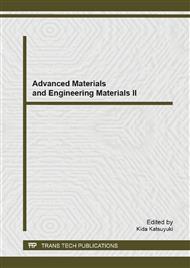p.457
p.464
p.468
p.474
p.479
p.484
p.488
p.492
p.497
Feasibility Study for Copper/Zirconium Oxides as Oxygen Carrier in Chemical Looping Air Separation (CLAS)
Abstract:
Chemical looping air separation (CLAS) is a new and energy saving method to separate oxygen from air. In this work, oxygen carrier was prepared by mechanical mixing method using CuO as active phase and ZrO2 as binder. XRD and SEM analysis indicate that ZrO2 cannot react with CuO at high sintering temperature and oxygen carriers prepared by this method are porous. Reactivity tests of oxygen carrier were investigated in STA409PC thermogravimetric analyzer using both temperature-programmed and isothermal thermogravimetry. The results show that the copper-based oxygen carrier has the capability of releasing oxygen when the temperatures higher than 850°C in nitrogen atmosphere. The reaction rates increase greatly as the temperature increases. Moreover, the oxygen carrier can keep high reactivity after several cycles. The copper/zirconium oxides as oxygen carrier were found to be suitable for CLAS process.
Info:
Periodical:
Pages:
479-483
Citation:
Online since:
April 2013
Authors:
Price:
Сopyright:
© 2013 Trans Tech Publications Ltd. All Rights Reserved
Share:
Citation:


